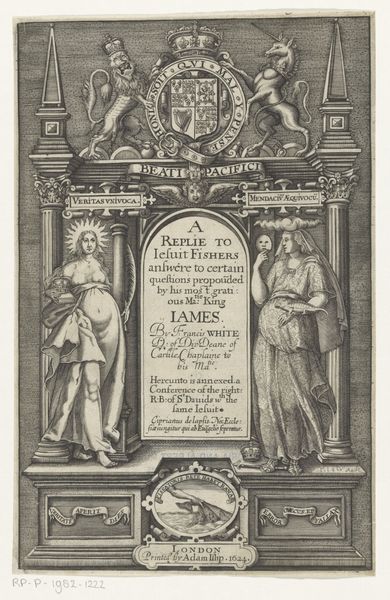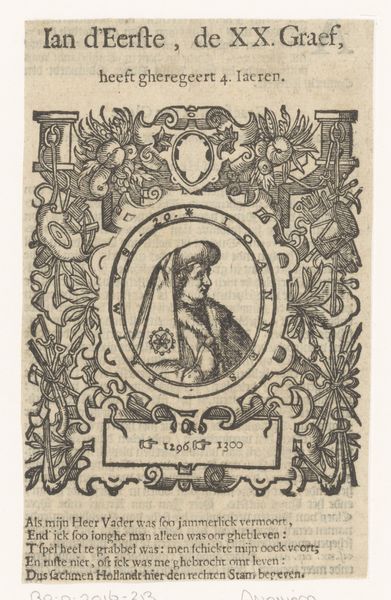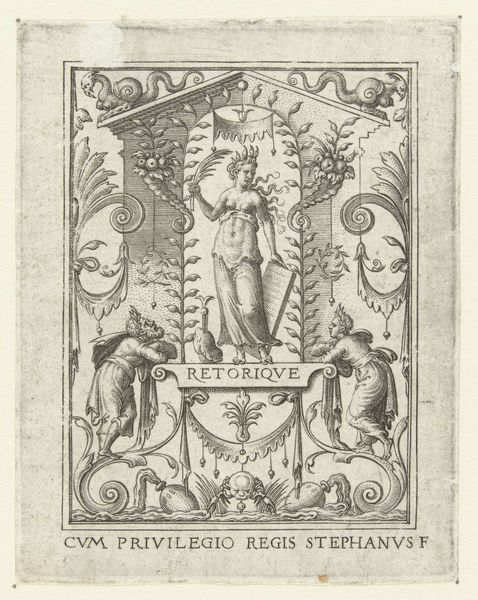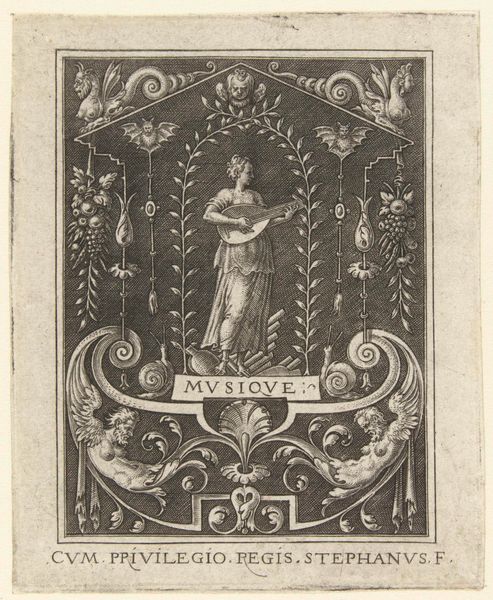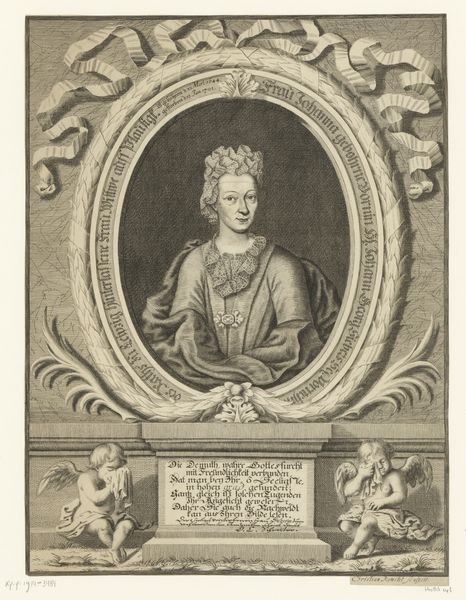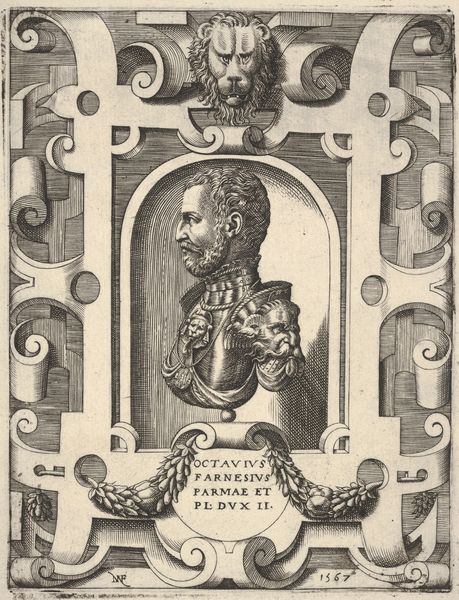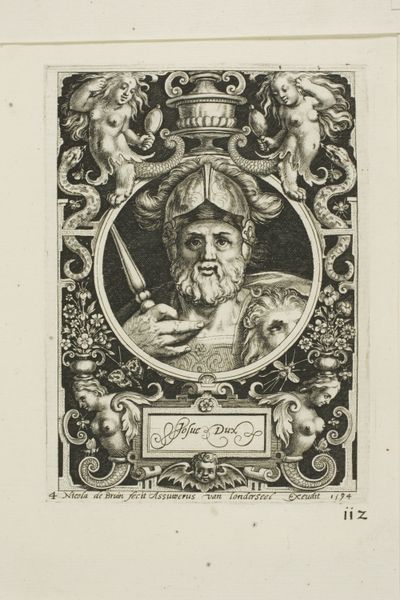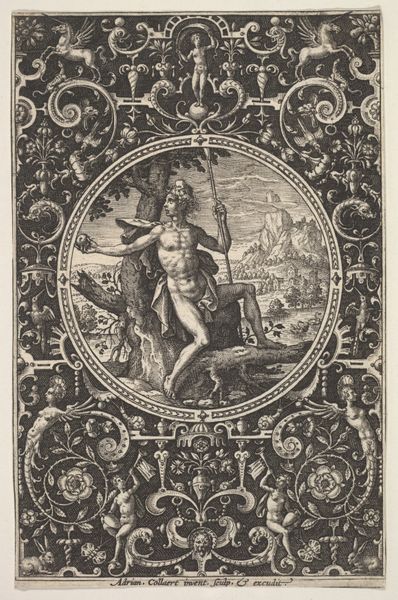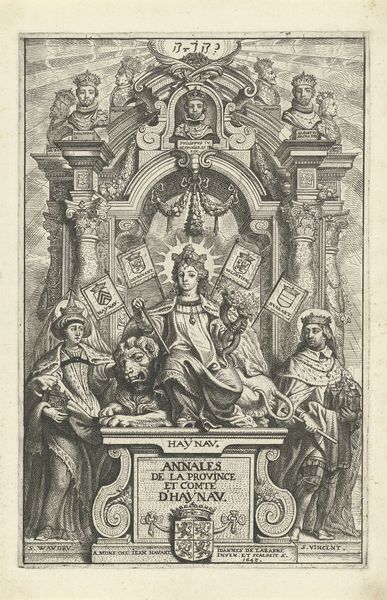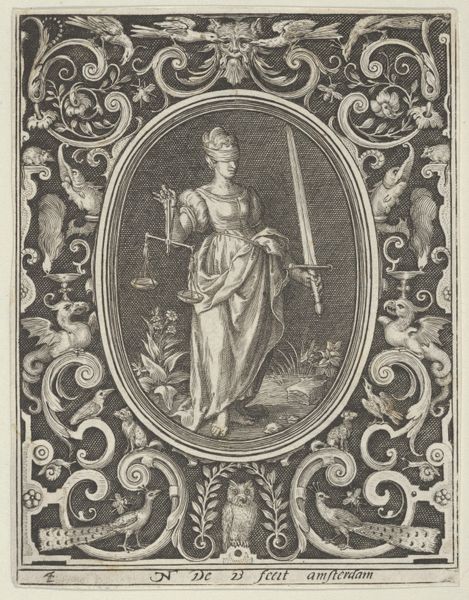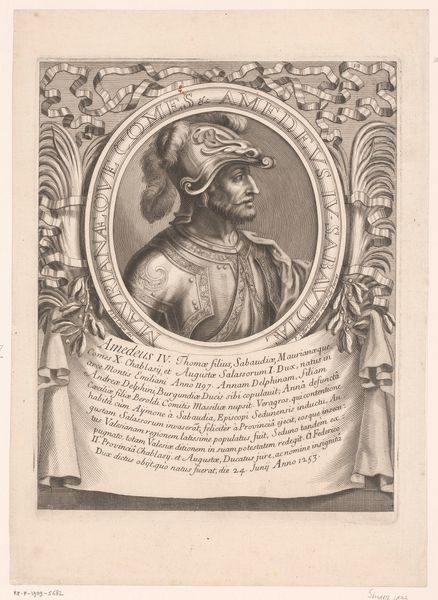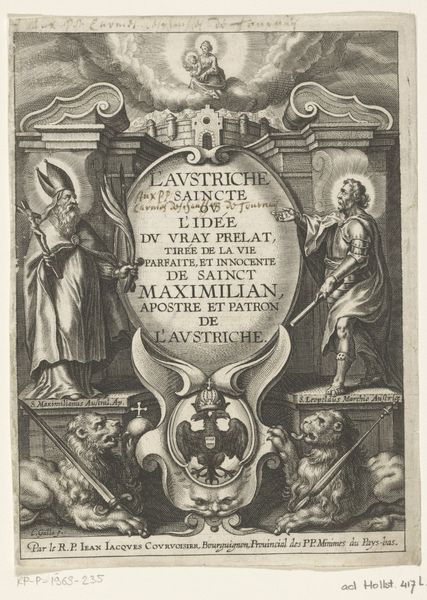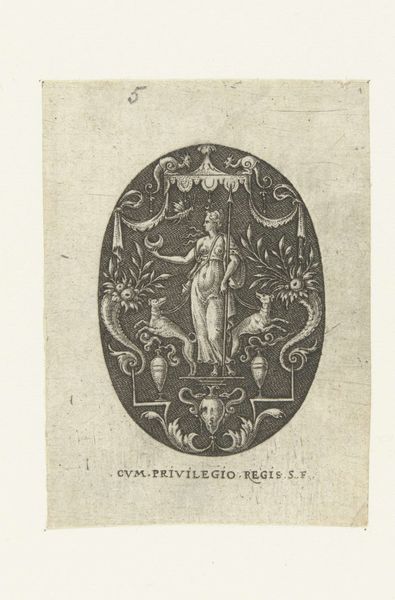
Bust of Janus surrounded by strapwork, from the series 'Deorum dearumque,' a set of images of deities after coins in the collection of Abraham Ortelius 1573
0:00
0:00
drawing, print, engraving
#
portrait
#
drawing
#
allegory
#
pen drawing
# print
#
11_renaissance
#
northern-renaissance
#
engraving
#
profile
Dimensions: plate: 4 13/16 x 3 5/16 in. (12.2 x 8.4 cm) sheet: 7 3/8 x 5 5/16 in. (18.7 x 13.5 cm)
Copyright: Public Domain
This engraving of the two-faced Roman god Janus, surrounded by elaborate strapwork, was made in the Netherlands sometime between 1563 and 1573 by Gerard van Groeningen. It comes from a series of images of deities, all based on coins collected by the humanist Abraham Ortelius. The choice of Janus is significant. As the god of beginnings, transitions, and doorways, he looks both to the past and the future. His image here, copied from an ancient coin, speaks to the Renaissance fascination with classical antiquity. The ornate strapwork, however, is entirely of its own time, reflecting the late-Renaissance fashion for complex, stylized ornament. This print, now housed in the Metropolitan Museum of Art, testifies to the social life of images in the 16th century. Coins were not just currency but also sources of historical and cultural knowledge, and prints like this one helped to disseminate that knowledge to a wider audience. Historians rely on sources such as letters and inventories to understand the meaning and purpose that a print like this would have had for its early viewers.
Comments
No comments
Be the first to comment and join the conversation on the ultimate creative platform.
